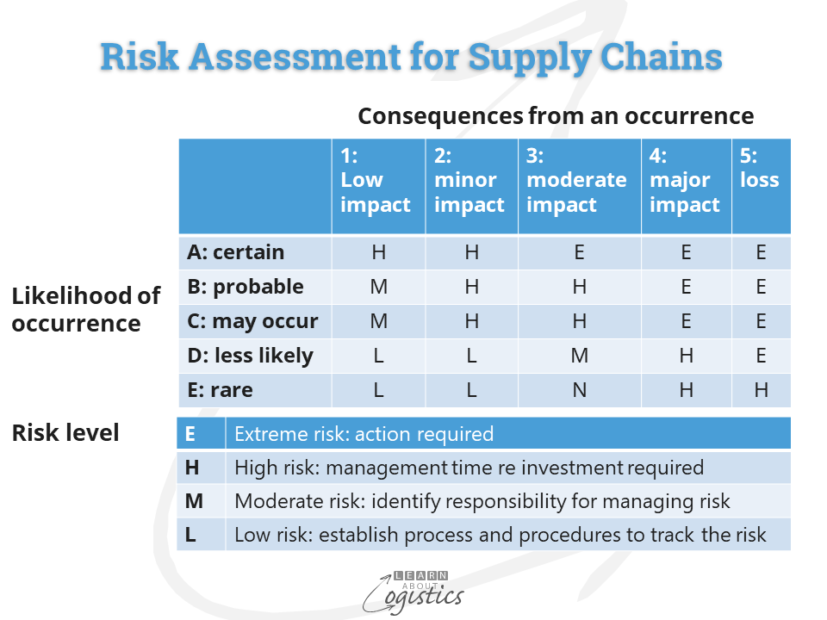The flow of disaster relief
As the negative effects of climate change become evident, the increase in natural disasters will require additional relief resources. A Learn About Logistics reader in Somalia asks a question about the risks to be considered when providing logistics services in a disaster.
The terms used are: Humanitarian Logistics, which provides international disaster assistance, typically into developing countries, while Disaster or Emergency Response Logistics typically designates country level logistics assistance.
These incorporate the capabilities of various Logistics disciplines to supports relief operations that bring medicines, food, water, shelter and materials to people affected by natural disasters such as floods, storms, fires and earthquakes. The assistance is provided by international and national NGOs and governmental organisations. A study by HELP Logistics and Kuehne Logistics University reported that an average of 73 percent of total disaster expenditure is spent within relief supply chains.
A typical Logistics flow of items for disaster relief is:
- Items at international suppliers or pre-positioned at regional hubs
- Port of entry for the disaster zone (land, sea or airport);
- Receiving warehouse(s) near the port of entry (may also be called a primary warehouse). Warehouses must handle ambient and temperature specific (i.e. pharmaceuticals) supplies and replacement parts for transport and other equipment
- Forward warehouse at a safe location but near the disaster area; then
- Transfer point for distribution of relief goods to beneficiaries (may also be called a terminal storage point or quick rotation warehouse)
Humanitarian Logistics is required across the three phases of a disaster event: Prepare, Response and Recovery. Within each phase are planning and operations that utilise four logistics capabilities:
- Storage and handling of pre-positioned supplies and equipment
- Transport, storage and distribution of freight within a disaster response area; plus the movement of affected people
- Humanitarian Logistics Deployment Support
- People management of Logistics and Emergency Specialists
The Logistics activities include: inventory pre-positioning; distribution of international and local purchased supplies; relocation of people affected by a disaster, transfer of casualties and the movement and accommodation of people engaged in a relief operation. Also the support of relief operations, such as organising international air and sea transport and local truck and small boat movements, maintaining helicopters and aircraft and managing electronic communications.
Procurement for pre and post disaster supplies and services is typically managed by a different group, which could be based at a relief organisation’s head office.. An approach to risk in Procurement is discussed in an earlier blogpost. The ‘need’ in Humanitarian Procurement is based on the probabilities of events occurring. Orders on suppliers will contain provisions for increased volumes at short notice.
Uncertainty and Risks in Disasters
Uncertainty in any organisation’s Supply Network is generated through three elements, which interact and amplify each other to provide unknown outcomes:
- Complexity: built into processes, both internal (often management directed) and external
- Variability: in the patterns of demand and supply through supply chains
- Constraints: restrictions and interruptions in the flows of items, money, transactions and information moving through an organisation’s nodes and links in the supply network
Commercial Logistics works within the defined supply network of an organisation. Military Logistics has a planned process for each theatre of engagement. However, Humanitarian Logistics has a high level of uncertainty about the location and scope of activities for each disaster. It therefore can only work with probabilities of an event occurring at a location.
The role of Risk Management is to change unstructured Uncertainties into structured Risks. As shown in the diagram, this is done within a matrix, identifying the Likelihood of an event occurring, against the likely Consequences if the event actually occurs. In addition, there is an estimate of the effort and cost required for mitigation and adaptation actions:
- Mitigation measures: actions taken to reduce the likelihood of negative events occurring or affecting an organisation
- Adaptation measures: actions that reduce the vulnerability of an organisation from the effects of negative events that may occur

At the corporate NGO planning level, the four areas of risk are:
- Supply network risks within each supply chain
- External risks that arise from interactions between a supply chain location (inventory node or transport link) and its wider environment, including the Environmental, Social and Governance (ESG) risks
- Internal supply chain risks for the relief organisation
- Internal supply chain operational function risks
Elements (and therefore potential risks) that Humanitarian Logistics must address before and during emergencies were identified in 2008 by the United Nations Joint Logistics Centre (UNJLC) as:
- Delivery of the appropriate supplies in good condition, when and where they are needed
- Utilising a wide range of transport, often improvised at the local level
- Limited, rapid and specific deliveries from outside the area affected
- A system of prioritising various relief inputs
- Storing, staging and moving bulk commodities
- Moving people
- Co-ordination and prioritisation for the use of limited and shared transport assets
- Possible military involvement in logistics support (especially in cases of civil conflict)
At the immediate disaster level, a Humanitarian Logistician reported that with the high risk of a riot at a refugee camp, he was very quick to develop a spreadsheet for equitable food distribution among different tribal groups and clans.
The main factors in the operating environment which shape the response to humanitarian crises are:
- Capacity of the infrastructure e.g. to obtain, store and transport drinking water is a continuing challenge, as is the threat of power disruptions and the state of roads
- Availability and quantity of transport assets in the country
- Politics of the situation
- Civil conflict in the area of operations
Although there are pre-disaster contracts and arrangements in place to provide responsive but flexible logistics, each relief assistance event will be individual and relatively ‘ad-hoc’. ‘On the ground’ risk assessment will therefore occur as required and some outcomes will be ‘less than optimum’. For example, arriving supplies may exceed the forward capacity, so quick decisions (which in hindsight maybe incorrect) are required concerning items that will go to forward warehouses and transfer points in the remote areas.
Humanitarian and Disaster Response Logistics is a discipline within logistics, with its own requirements. To be effective, the main requirement is a focus on risk management, because disaster events have so many uncertinties.

